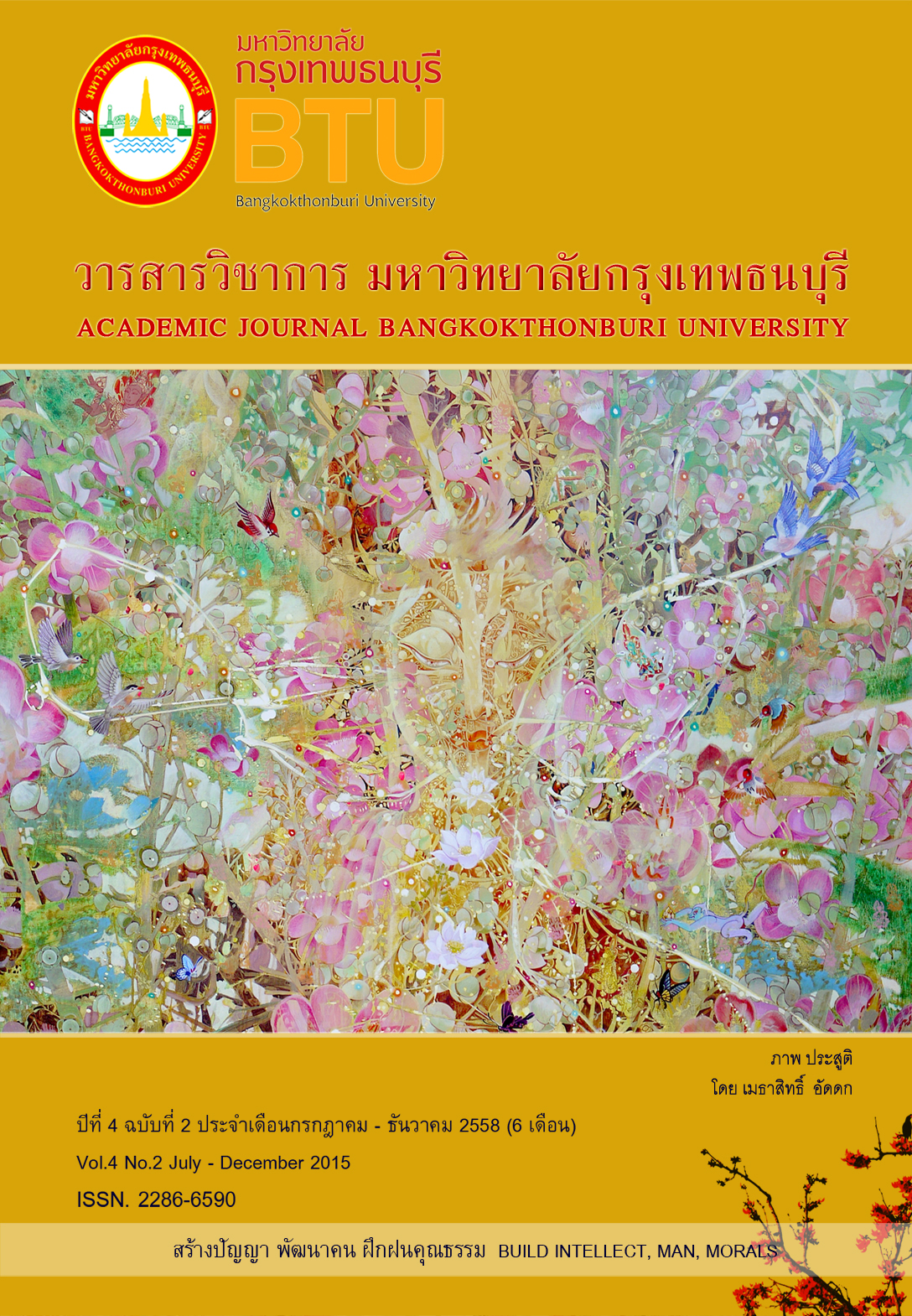การพัฒนาคุณภาพชีวิตผู้สูงอายุ
Main Article Content
Abstract
บทคัดย่อ
การวิจัยเรื่อง “การพัฒนาคุณภาพชีวิตผู้สูงอายุ ของเทศบาลตำบลธรรมศาลา จังหวัดนครปฐม มีวัตถุประสงค์เพื่อศึกษาระดับการพัฒนาคุณภาพชีวิตผู้สูงอายุ และเพื่อเปรียบเทียบการพัฒนาคุณภาพชีวิตผู้สูงอายุ ที่มี เพศ อายุ สถานภาพ รายได้ อาชีพเดิมของผู้สูงอายุ ลักษณะที่อยู่อาศัยต่างกัน ประชากรที่ใช้ในการวิจัย คือ ผู้สูงอายุโครงการสร้างหลักประกันรายได้แก่ผู้สูงอายุตามนโยบายเร่งด่วนของรัฐบาลประจำเดือนสิงหาคม 2557 งบประมาณปี 2557 (เข้าบัญชี) จำนวน 407 คน และใช้วิธีการสุ่มตัวอย่างของทาโร่ ยามาเน่ ได้กลุ่มตัวอย่าง จำนวน 222 ตัวอย่างเพื่อใช้ในการวิจัยครั้งนี้
ผลการวิจัยพบว่า การพัฒนาคุณภาพชีวิตผู้สูงอายุ โดยภาพรวม อยู่ในระดับปานกลาง เมื่อพิจารณารายด้าน พบว่า ด้านความตระหนักในคุณค่าแห่งตน มีอันดับสูงสุด รองลงมาคือ ด้านความสัมพันธ์กับสมาชิกในครอบครัว ด้านความสัมพันธ์ทางสังคม ด้านสวัสดิการสังคม ด้านการรักษาพยาบาล ด้านจิตใจ และด้านร่างกาย ตามลำดับ
ผลการทดสอบสมมติฐานพบว่า ผู้สูงอายุที่มีอายุ และรายได้ ต่างกันมีการพัฒนาคุณภาพชีวิตที่ต่างกันอย่างมีนัยสำคัญทางสถิติที่ระดับ.05 เป็นไปตามสมมติฐานที่ตั้งไว้
Abstract
The study entitled “Development of the Life Quality of the Elderly” was aimed at
investigating the levels of development of the life quality of the elderly living in the area under the jurisdiction of Thammasala Sub-District Municipality. Also, the study attempted to compare the life quality of the elderly with different socioeconomic - demographic backgrounds (sex, age, marital status, income, past occupation and the nature of dwelling). The population of the study was 407 old people received the elderly monthly allowance from the government in August 2014 ; 222 old people were used as the sample for the study; the sample size was determined by Yamane’s formula.
The data analysis has shed light on the facts specified below. Holistically, the life quality of the elderly was found to be at a medium level. Separately, the levels of the life quality of the elderly in descending order of degree were as follows : self-worth, relationship with family members, social relationship with outsiders, social welfare, medical care, mental health, and physical health. The hypothesis testing indicated that the elderly with different ages and incomes had different levels of life quality development; the difference was statistically significant at the .05 level. Thus the set hypothesis was substantiated.


